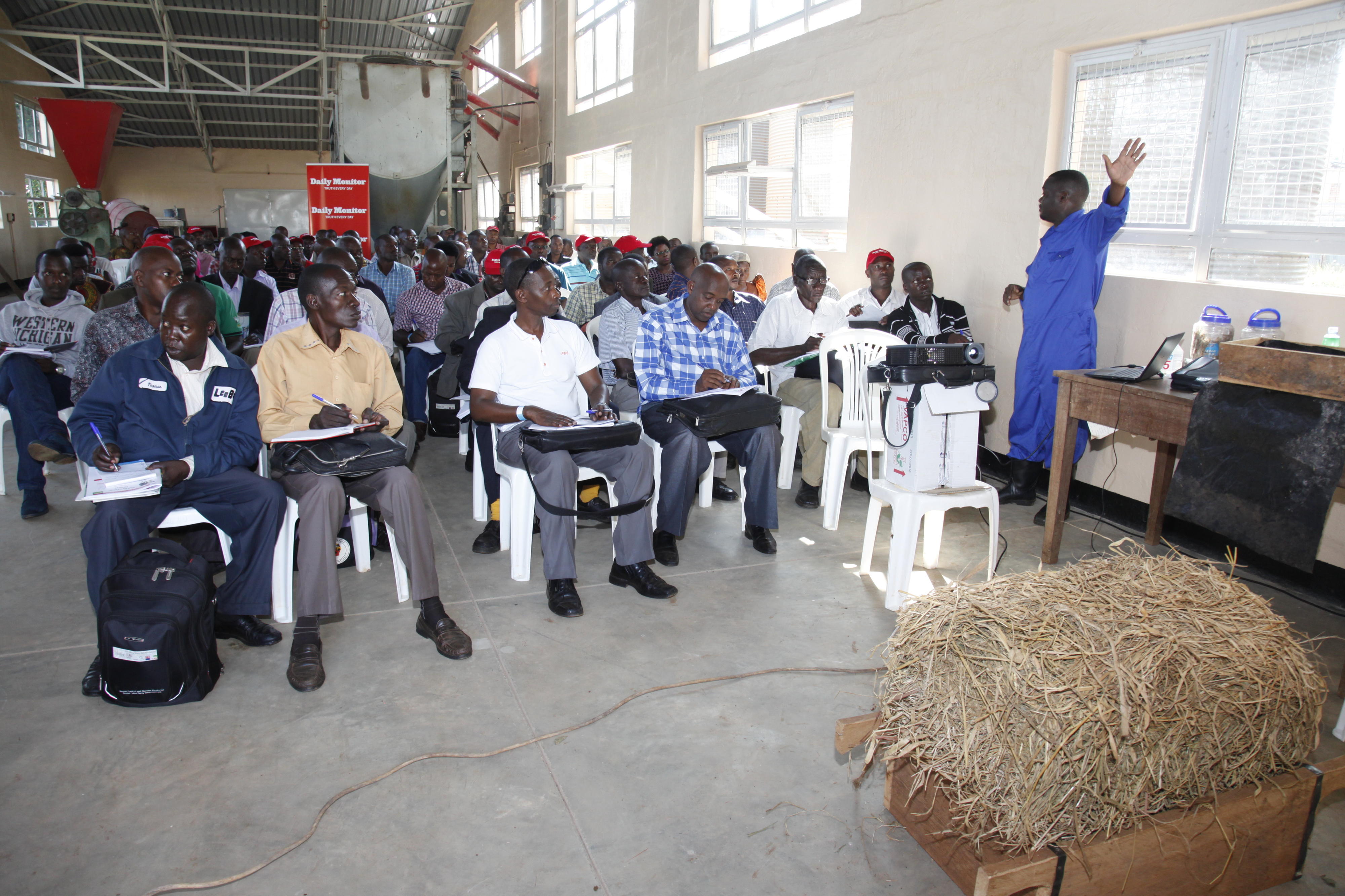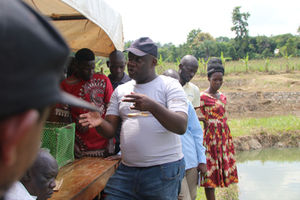
Farmers take notes as an agronomist trains them during a recent Seeds of Gold Farm Clinic. Photo | Michael J Ssali
Recently, Ngetta Zonal Agricultural Research and Development Institute in Lira District, was the regional venue for the annual series of the Nation Media Group (NMG) Seeds of Gold Farm Clinics.
The event brings together people intent on improving Uganda’s agriculture sector and is inspired by this common goal.
Being the biggest employer at 70 percent and contributing a third of Uganda’s annual GDP, the sector is characterised by smallholder farmers, with the majority located in rural areas.
However, productivity is limited by reliance on natural weather conditions and widespread use of traditional methods and equipment.
Commercialised farming
Under a succession of national development plans, the government is encouraging and actively supporting greater commercialisation that can result in higher incomes for the farmers. Value-addition is a seen as a crucial element, but this also requires plenty of capacity building to become a reality.
The Seeds of Gold Farm Clinics offer much in terms of acquiring expert knowledge, learning new techniques, accessing information about latest market trends and browsing products and services that can boost productivity and yields. Mingling with government officials, extension workers, service providers in the agriculture supply-chain, also allows farmers to find a receptive audience to whatever challenges they may face.
The increasing popularity and continued success of the Seeds of Gold Farm Clinics, is also reflected in the consistent support of three major sponsors, Bank of Uganda, the National Agriculture Research Organisation (Naro) and Stanbic Bank Uganda Limited.
Agricultural Credit Fund (ACF)
For 15 years now, the BoU has been managing, but in cooperation with selected commercial banks, the Agricultural Credit Fund (ACF) which provides loans to farmers at below market rates. Specifically, the key objective of the ACF is to promote commercialisation of agriculture through provision of medium- and long-term financing to the agricultural sector focusing mainly on value-addition.
Another benefit of ACF is that BoU acts as a catalyst for the financial institutions to venture into agricultural financing. However, in recent years many have now embraced lending to the sector even without government guarantee. Stanbic Bank is one of major contributors to ACF.
Gerald Byaruhanga, the Stanbic relationship manager agribusiness said, “As a bank we have come up with different solutions that support higher production in the agriculture sector because without this, I don’t think the people doing value-addition, the aggregators and the exporters can exist.”
He said in recognition of agriculture’s importance to the national economy, 10 years ago the bank set up a special department to fully cater for it. He said, “But we also realised that agriculture employs both the skilled and unskilled. That’s why we are putting more emphasis and support on agri-business.”
Byaruhanga said, “Mainstream looks after the commercial and SME customers. We look after the entire value-chain right from production. We support the aggregators who buy from the farmers, then to the value-addition. We also support in capital expenditure (capex) whereby maybe some of our customers are doing value- addition, but need support with working capital to purchase directly from the farmers. Or maybe someone is setting up a factory or someone else, is expanding a farm.”
“Under our Vehicle and Asset Financing, we support customers in purchasing machinery that is mainly for doing value-addition. We then support the distribution chain whereby our customers can procure a fleet of vehicles. Stanbic Bank also has a setup we call Africa-China banking which links our customers to suppliers in China,” he said.
Financing through Saccos
The third area of Stanbic’s agriculture intervention is the saving and credit cooperative organisations (SACCOs) and small-scale farmers. Byaruhanga said, “Under SACCOs, we are mainly looking at the people who are into production. We avail financing to the SACCOs at the lowest rate-- as low as 10 percent for those people participating in agriculture. Our target is farmer cooperatives. We have done a lot in Lira, whereby we have supported them in capacity building. I think in Lira we have about 10 SACCOs which we have helped to set up structures in order to manage their members better and also supported them in digitalising their operations.”
Frank Mugabe, head of communications at Naro said, “At Naro, we treasure working under partnerships. That is why we have a whole unit of partnerships, because we know that not a single entity can handle agriculture on a 360-degree basis. You need other partners that support you along the value-chain.” “For example, as Naro, ours is the creation of technologies, creating new seeds and responding to current needs. But now farmers will plant, but are then faced with new challenges for example, climate change. They plant, but they will not get the yields they had planned for, because of the changes in the climate. They need to insure their gardens and that is why you have Jubilee Insurance on board.”







